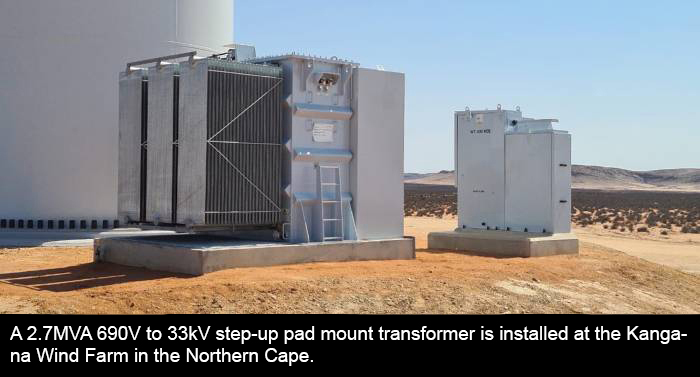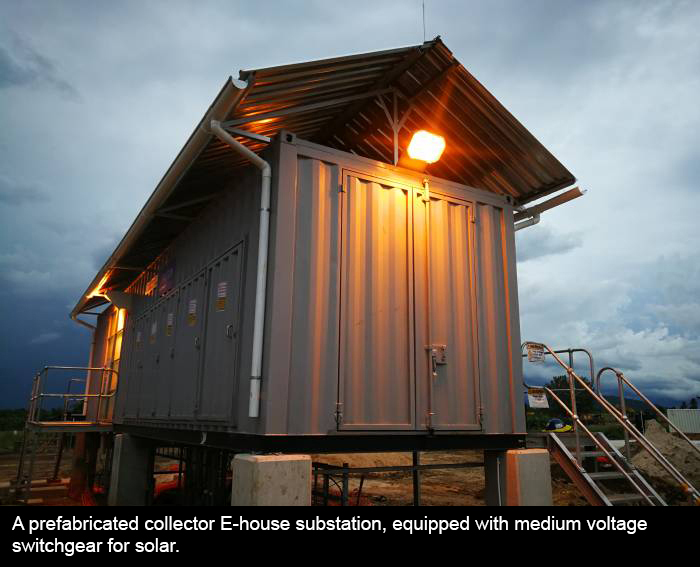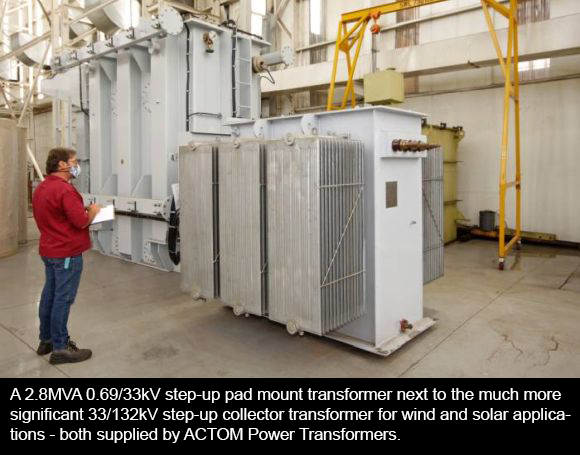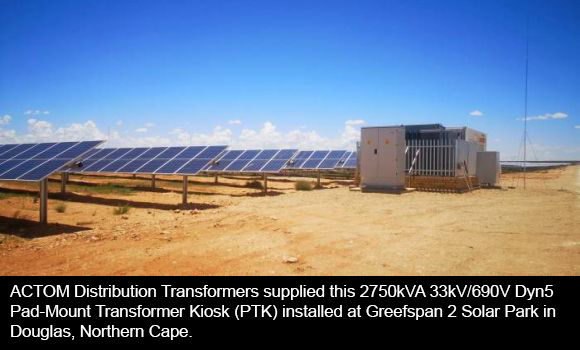The recently concluded COP 26 has brought the stark reality of the world’s energy needs to the forefront of all participating countries and highlighted just how far behind South Africa is in the race for renewable energy sources. So much so that that the world’s wealthiest countries have come together and penned a R130 billion deal to support SA in reaching its 2030 CO2 emission targets.
The world’s wealthiest countries are actively and speedily moving to greener energy sources utilising various natural elements, such as water, wind, geothermal, solar, and biomass, to generate electricity and ensure that greenhouse gasses are reduced by 49% by 2030 and 95% by 2050.

The renewable energy industry in South Africa is relatively new compared to other countries, which started using wind as an alternative energy source about 20 years ago. The first wind farm in South Africa became operational in 2014, and today, we have approximately 40 windfarms, equating to 1500 individual wind turbines operating in the Western and Eastern Cape provinces.
Mervyn Naidoo, ACTOM CEO, stated, “When you look at the traditional coal requirements from a coal power station and engineering perspective, it was clear that ACTOM had to make a distinct shift by enhancing existing designs, looking towards new technologies, and designing new product lines”. As a result, ACTOM has been positioning itself to align with Eskom’s “Just Energy Transition” plan, which is to decommission ten coal fired power stations by 2040 and an additional three by 2050. The “Just energy transition plan” presents an opportunity to repurpose these sites into agrivoltaics, photovoltaics and gas generation and migrate towards a cleaner and greener energy future while creating new job opportunities for those displaced by the replacement of coal technologies.
“Traditionally, ACTOM supplied switchgear, protection technologies, control schemes and electric motors. What is transpiring now with renewable energy projects is that Engineering Procurement Contractors (EPC’s) are requiring an integrated offering”, he added. This dynamic shift into the renewable energy space has triggered a whole new migration in ACTOM towards evolution engineering in new design technologies and embracing a new approach in the 4th Industrial Revolution (4IR).
“Now, what is happening is that we have multiple renewable power plants scattered around the Northern Cape, Eastern Cape, and Western Cape. The technology applied there is very different to what is applied in a traditional coal fired power station. With that, we had to say, let’s adapt our product and engineering offers as well”.
For example, “With all these plants scattered all over the country, we had to evolve our condition monitoring to monitor individual systems remotely. You can imagine, when you have an issue with a piece of equipment that sits in the Northern Cape, it makes sense to have online technology whereby you literally access the operating parameters of the plant and get into the diagnostics to see if it is operating according to its set parameters. So, with that, we had to develop new software, systems, and technologies to be able to sit in Johannesburg and access a plant irrespective of where it is located. This has triggered a whole new approach towards the fourth industrial revolution and the digitisation of things,” said Naidoo.

Wind power currently tops the list as the most promising renewable energy source in South Africa. According to Christian Barret, Divisional CEO, ACTOM Energy, “When Round 7 of the Renewable Energy Independent Power Producer Procurement Programme (REIPPPP) is fully implemented, we are estimating that we could have approximately 70 windfarms operational, which will host 2500 turbines”.
ACTOM benefits from an established repair and services industry in South Africa and, as a group, is ready to take on the challenge. “By integrating ACTOM’s locally manufactured electrical equipment, repairs and services, together with its energy solution, front-end engineering and project management capabilities, we can provide customised solutions for most of our client’s windfarm requirements,” said Barret.
John McClure, Operations Manager, ACTOM Power Systems, added that ACTOM had not previously got involved with project investors or wheeling arrangements. Typically, the developer with financial backing applies to the Department of Mineral Resources & Energy applicable to a specific renewable window; currently, window five is in progress. Once an application is accepted, the developer awards the job to an Engineering Procurement Construction (EPC) contractor, which are typically internationally based companies who would supply the wind turbine generators but not be involved in the installation or maintenance of the balance of plant required for system integration, which is where ACTOM comes in.
Each wind farm presents two distinct areas of opportunity for ACTOM. The first is the supply and maintenance of the electrical components and turbines, which convert the aerodynamic force from the rotor blades into electricity through its gearbox-generator subassembly. The second is the Balance of Plant (BoP), which collects the power generated by each turbine, steps up the voltage and transmits it into the national grid. “To this end, we have completed two turnkey contracts for the latter; the first was the Nordex Kouga Wind Farm in the Eastern Cape, and the second for Vestas at the Tsitsikamma Community Wind Farm. We have also submitted additional bids for window five and are busy working on aligning with the recently announced successful bids,” McClure said.
All building systems and components need some level of maintenance, and renewable-energy systems are no exception to this rule. The specific maintenance requirements vary based on the type of system and components installed. For all renewable energy systems, it is proper maintenance practice to inspect the integrity of mechanical and electrical connections at least once each year, which is a non-invasive examination of the transformer online and under load. Corroded or loose connections can result in decreased performance, and in extreme cases, they can create safety hazards.
In addition to wind power generation, ACTOM is actively involved in two large scale green energy projects across Africa.
The first biomass power plant installation, established under South Africa’s Independent Power Producer Programme (IPPP), has been completed as a joint venture between John Thompson’s Industrial Watertube Boilers (IWTB) and Lesedi Nuclear Services. The 25MW power plant is adjacent to the Sappi Ngodwana pulp mill in Mpumalanga. According to Russel Warren, General Manager of John Thompson’s IWTB unit, “the installation took 20 months. Now that it has been completed, we are contracted for the operating and maintenance for the next five years. We have recruited approximately 40 electrical and mechanical artisans to perform the operating and maintenance of the plant”. The contract is one of the largest operation and maintenance contracts John Thompson has undertaken. The JV company will operate and maintain the entire plant, comprising the boiler, turbine, and balance of the plant.

The second is Hydropower. Currently, Hydropower accounts for 17% of the electricity generation in Africa on average. In some countries, such as the Democratic Republic of Congo, Ethiopia, Malawi, Mozambique, Uganda, and Zambia, Hydropower in electricity generation exceeds 80%. Marthinusen & Coutts (M&C), a division of ACTOM, is the largest aftermarket service provider of electrical and mechanical Rotating Machines in Africa. They work extensively on Hydro Power plants and have just been contracted to refurbish a synchronous condenser at the Inga River hydro project.
With the whole Hydrogen economy in its infancy, ACTOM sees massive potential. South Africa is well placed to take advantage of a worldwide market for green hydrogen that could be worth $2.5 trillion by 2050. South Africa has plans to link its massive platinum reserves to the green hydrogen market that is touted as a trillion-dollar opportunity in the green energy world. “In our perspective, we are looking to see how we can participate in Hydrogen, but we see it as a key part of the energy mix and will actively get involved”, said Naidoo.

All over the world, interest in hydrogen as a vector for clean energy is growing as industries and governments investigate and implement national decarbonisation strategies. With the rapid growth in renewable electricity and falling costs of wind and solar power, the opportunity to produce zero-carbon hydrogen has caught the attention of global energy players.
With the world increasingly turning towards countries with optimal renewable energy resources to provide the clean energy of the future, South Africa is in a unique position to revolutionise its economy and supply green hydrogen to the world.
Whether countries have established renewable energy plants or are only just entering the renewable industry, there will be an extensive requirement for products and services. “We are evolving our product lines to be at the forefront of renewable energy, and where we have gaps, we are looking towards partnering.
We are targeting to utilise our current platform as ACTOM to be the launching pad for manufacturing on the continent through the African Continental Free Trade Area. The way I look at it is that Africa as a continent generates 170GW of power for about 1.4 billion people. Whereas China also has a population of 1.4 billion people, but they generate 2200GW of power. So, you can see there is a radical gap, and it is a no-brainer that Africa must gear up when you look at an analogy of what is happening with mobile and cell phones in Africa. Like in Nigeria, they went from 7000 landlines to the point of 150 million mobile phone contracts in less than 5 – 10 years,” Naidoo concluded.
ACTOM, through innovation of products and services, is well-positioned and geared towards capitalising on the many opportunities that exist with greener electricity generation in both South Africa and the rest of the Continent. By strengthening and adding to our current product offering and delivering turnkey solutions, we believe that we can make a considerable contribution to achieving future CO2 emission targets and a cleaner, healthier living environment. Most of all, ACTOM is well poised to continue providing the necessary employment for our people.

